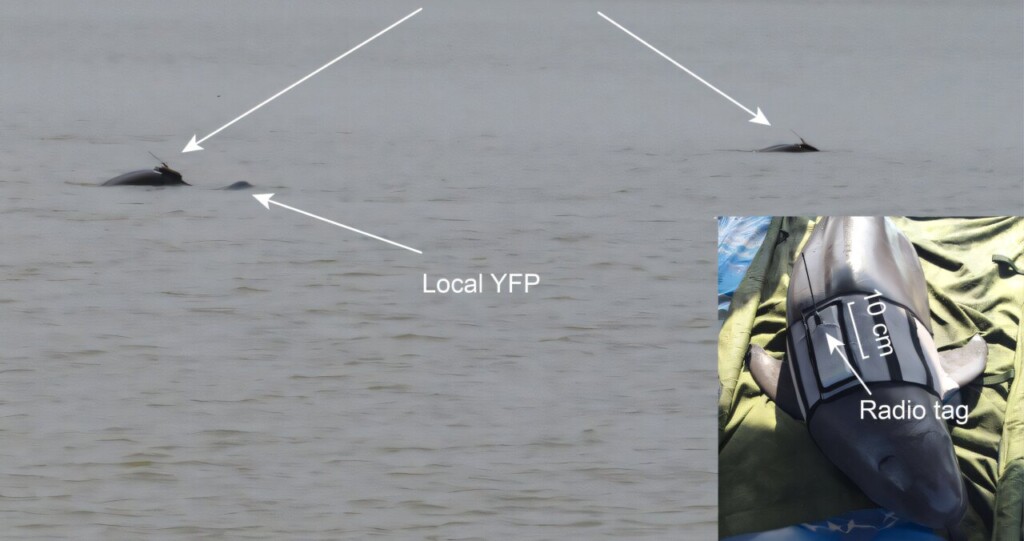 Two released Yangtze finless porpoises (YFPs) were photographed with a local individual on the third day post-release – credit, Biology Letters (2025)
Two released Yangtze finless porpoises (YFPs) were photographed with a local individual on the third day post-release – credit, Biology Letters (2025)For the first time ever, Chinese biologists have successfully rescued, rehabilitated, and reintroduced a Yangtze finless porpoise back into the wild stretches of the great river.
A critically-endangered species of cetacean, the family that includes dolphins, porpoises, and whales, the Yangtze finless porpoise lives only in the Yangtze river, as the name suggests, but the population could number no more than 600.
Known by many names, including the Leading to Heaven River, the longest river in Eurasia hosts a number of endangered species, some of which have been the focus of conservation efforts.
Like the Thames in London or the Seine in Paris, industrialization ravaged the river’s biodiversity, though in recent years the water quality has improved substantially. The finless porpoise is one of two freshwater cetaceans that lived there, though the other went extinct.
Recently, biologists identified two male porpoises which had left an area that had been designated as an ex situ breeding center for the species. It would have likely been the case that without the intervention, the males would have died, since they were heading into areas where security and food were not guaranteed by conservationists.
Taken to the Laowan branch of a split in the Yangtze, the males underwent two years of acclimation to a Yangtze-like habitat where they freely ranged and foraged within an approximately 3.5 mile-long narrow waterway.
After the acclimation period, the males were deemed healthy and capable of living on their own. They were moved to a part of the river where groups of other porpoises were residing, and released as the biologists’ great hope for the long-term success of their breeding program.
In a scientific report on their efforts, the scientists note that such an endeavor had never been done before on the Yangtze finless porpoise, and that ex situ breeding programs for cetaceans in general have rarely been undertaken.
GOOD CHINA NEWS: Ancient Chinese Astronomer’s Star Log is Found to Be World’s Oldest–Predating Greeks by 200 Years
But against the odds, the males were accepted into established pods and demonstrated the capability of finding food along the mighty river. Three years later they were still thriving.
“This achievement represents a significant advancement in the conservation of Yangtze finless porpoise, which in time, once the habitat is restored and anthropogenic threats have been controlled, will contribute to population recovery,” the authors wrote.
SAVING RIVERS AND THEIR ANIMALS: Once Locally Extinct, ‘Top Predator’ River Otter Flourishing Again in New Mexico
Currently enjoying the effects of a ten-year fishing ban as part of the conservation efforts for the Yangtze, proof that individuals can be bred in safe, controlled, semi-native environments, as is done for so many terrestrial species, represents an enormous positive in the quest to keep the final Yangtze cetacean alive in the long term.
GNN recently reported on the Chinese government’s efforts to prioritize the ecological integrity of rivers and lakes following a long-term effort to improve freshwater quality among 2,500 freshwater bodies across the country.
SHARE This Great Conservation Program With Your Friends On Social Media…
Source link

